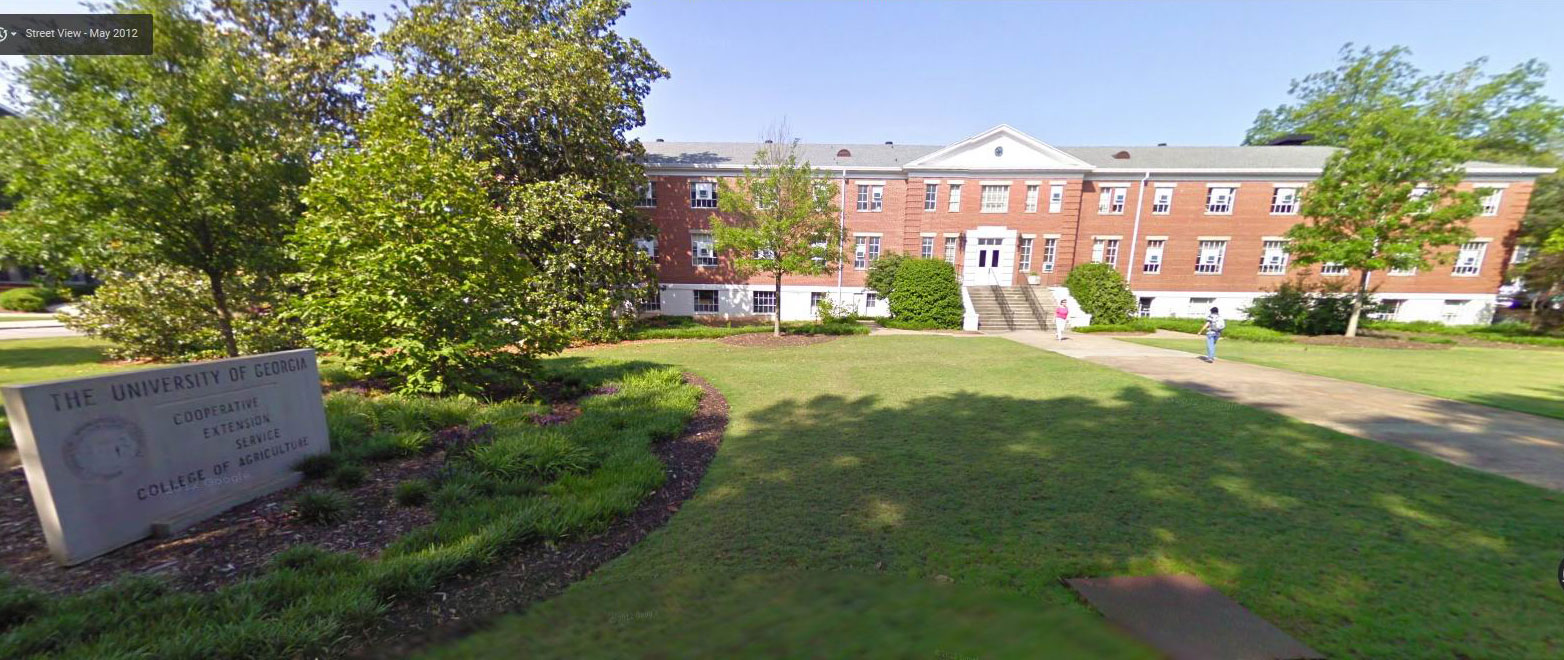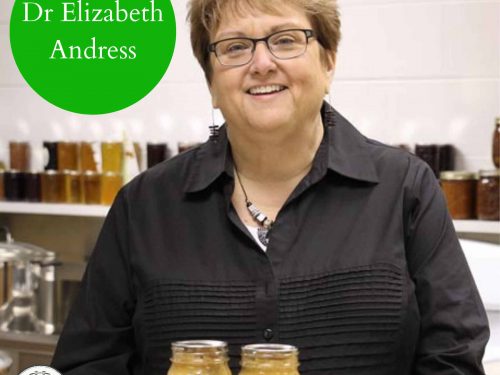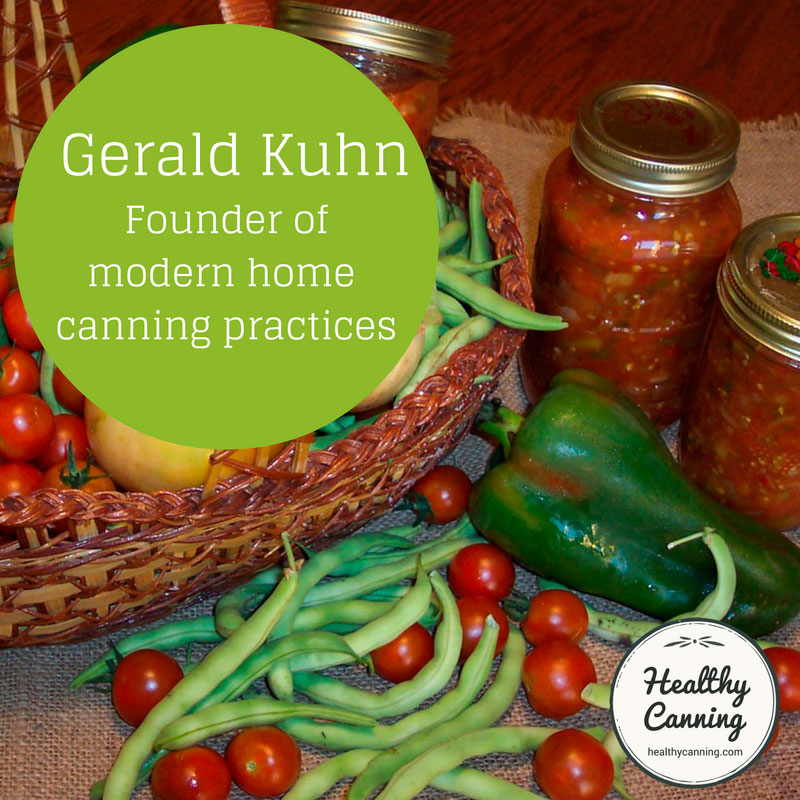
Google Maps Image 2016
The National Center for Home Food Preservation (NCHFP) is a publicly-funded center for research and education on home food preservation.
In Spanish, their name is “Centro Nacional para la Conservación Doméstica de Alimentos.”
Mission of the NCHFP
The National Center appears to have at least two roles:
- conduct and coordinate research to further develop knowledge in the field;
- knowledge transfer through outreach to both educators and end-users.
The center helps develop and disseminate current science-based advice on topics including canning, freezing, drying, curing & smoking, and fermenting.
The advice and guidance of the NCHFP is considered the gold-standard in home canning in the world today.
Where is the NCHFP located
It is physically housed in offices in Athens, Georgia, provided by the University of Georgia.
If you are looking for their virtual home on the web, it is here.
- Website: https://nchfp.uga.edu/
- Twitter: https://twitter.com/NchfpUGA
- Facebook / Instagram: (no FB / Instagram pages)
Leadership of the NCHFP
In November 2021, Dr Carla Schwan was hired as the new director of the National Center for Home Food Preservation to start in January 2022. 25 percent of her time will be allocated to research.
Previously, Schwan was:
“…a post-doctoral research fellow in the Food Science Institute at Kansas State University, where she also completed her M.S. and Ph.D. degrees in the area of food safety and prevention of food-borne illness. As director of the NCHFP, Schwan will serve as content expert to county agents in Georgia and across the country. Her appointment is 75 percent Extension and 25 percent research.
A native of Brazil, Schwan has dedicated her professional career to addressing complex domestic and international public health issues, particularly foodborne illness, antimicrobial resistance in foodborne pathogens and global food security.
“I am very humbled and excited to join such a great department and university,” Schwan said. “It truly is a dream come true! I hope to create a research program that contributes and advances food safety and home food preservation, as well as to meet people where they are in my Extension role.” [1]Powell, Cal. Two new faculty members to join nutritional sciences department. University of Georgia Press Release. 3 November 2021. Accessed November 2021 at https://www.fcs.uga.edu/news/story/two-new-faculty-members-to-join-nutritional-sciences-department . Worthy, Sheri. Dean’s Update 11/1/21. 1 November 2021. Accessed November 2021 at https://www.fcs.uga.edu/news/story/deans-update-11-1-21
What does the work of the NCHFP entail
Their work requires “pulling from science in many fields to make best consumer recommendations, including microbiology, chemistry, and engineering.” [2] Andress, Elizabeth. Safe Food: Research to Practice. Capital Hill Seminar Presentation. 8 April 2013. Slide 2
The Center:
- runs a web site;
- offers web-based curriculum on home food preservation. From 2005 to 2013, at least 13,000 people had taken their online course in home canning [3] Ibid. Slide 24 ;
- blog started in 2012;
- webinars started in 2013;
- youth curriculum released November 2014;
- from 1999 to 2010, the Center managed to also develop at least 34 new recipes / recommendations for home food preservation [4] Ibid. Slide 19 ;
- assists in development of undergraduate courses;
- gives presentations and workshops around the country;
- responsible for revisions and updates to the USDA Complete Guide to Home Canning [5] Project Summary. Accessed July 2016.
The Center does not:
- Approve specific brands of equipment;
- Approve specific books;
- Approve recipes developed by other sources. [6] Harris, Linda J. and Sheryl Yamamoto. Master Food Preserver Slide Presentation. University of California Cooperative Extension. 9 October 2014. Accessed June 2015. Page 31 to 37.
Challenges they are facing
- progressively restricted funding & resources versus progressively increasing demand;
- developing new products in response to demand;
- keeping up with changes in ingredients;
- keeping up with changes in the technologies coming on the market such as new canner types being offered to consumers;
- demands for nutritional changes such as reduced sugar, reduced salt, leaner and alternative proteins;
- keeping the extensions and educators up to speed;
- acquiring funding for new research that consumers are asking for.
Funding of the NCHFP
They don’t seem to have complete fixed guaranteed funding, rather it seems to come in chunks for projects over a period of years.
Over different funding periods, different university extension services will be main collaboration partners.
1999-2004
- Alabama A&M University
- University of California-Davis
2005-2010
- Clemson University Extension
- University of Illinois Extension
- Oregon State University Extension
2011-2016?
- University of Wisconsin
- Clemson University Extension
If you care about the work they are doing and want to enable them to do more, let your elected representatives know. The few shekels that the government has invested in home canning research has paid untold dividends over the decades, and keeps on delivering a return. It would be difficult to say that about much other government spending.
Interacting with the NCHFP
How the NCFHP can help you is:
- Answering questions directly related to a USDA or other recipe posted on their web site;
- Answering questions about general techniques related to various food preservation techniques.
In answering you, the resources that they have to assemble an answer for you with is the collection of trusted science-based research that has been amassed by the USDA and various Extension services and rolled up into the NCFHP’s knowledge base.
They will search through those resources to see if there is anything there that can provide guidance.
If they cannot find an answer there, they won’t make up an answer, or guess. So you might not always get the answer you were hoping for but they can’t just make something up — the liability would be too onerous.
The following advice on whether to peel potatoes or not for canning illustrates this. In answering that question, they can only go by the documented results of the research that they inherited. Not peeling could alter the bacterial load into the canner, so that separate scenario would need separate testing (ED: that they currently don’t have the funding to do.) Note how carefully thought out the answer is:
As for canning potatoes, our recommendation is to peel potatoes before canning. That style of preparation is how the research was carried out to determine the recommended processing, and in order to know that the peeling does or does not make a difference, research would need to be done with unpeeled potatoes. Different assumptions might be needed in assessing just how many spores of C. botulinum or other bacteria might be present at the start of the process and what amount of heat might be needed to meet standards for the risk of possible survivors. We do not know of research of canning potatoes with peels left on, so we recommend the preparation steps provided with the process recommendation, especially because there is a possibility that the deviation could result in a less safe situation.” [7] NCHFP blog posting. Preserving Potatoes. 6 October 2014. Accessed July 2016.
So as you can see, they can only give answers based on the knowledge base that they have — what they know for sure. They don’t guess, and couldn’t even, for obvious liability reasons in the most litigious country in the world.
They can’t answer questions about recipes from other sources, either. For instance, oftentimes people berate them for there being no canning advice about cabbage, eggplant, etc, but it was never the USDA that had that information: it was Ball. Ball published the information for several decades, and then withdrew it. If you are interested in those topics, you would need to contact Ball directly on those questions. The NCHFP has inherited all the USDA research and there were never any recommendations published for those things, so they genuinely have no information to give you.
The Center says on its blog,
Nor do we have access to the testing information done for the recipes and processes in the Ball Blue Book, or other private sources. If you decide to use their procedures, and are not able to, or do not want to, follow them as written, you will need to contact the company directly to ask them…. ” [8] NCHFP blog posting. Going Nutty Over Advice for Preserving Nutmeats? 9 December 2014. Accessed July 2016.
As is understandable, the NCHFP doesn’t have the resources to even begin helping people to take their “own recipes” and change them into safe canning recipes.
If ever you send them a question, bear in mind that they are chronically under-staffed and overworked, so be patient. If it’s a rush answer you need on something right that day, you are better off trying something such as your local Extension Agent, Ball’s Facebook pages (there are several now for various countries) or Bernardin.
You can be sure that all answers you get from the NCHFP are honest, straight up and uninfluenced by any corporate sponsor. Be courteous and be sure to thank them for their time. They always have an overloaded inbox of emails to answer. And bear in mind that they’d probably love to have more answers to give you on more topics, if it weren’t for funding constraints holding them back in researching those answers.
History of the NCHFP
Amy Halloran at Food Safety News wrote in 2011,
The National Center for Home Food Preservation represents a decade of USDA-funded research carried out at the University of Georgia. The USDA has offered home canning and other home food preservation recommendations since the early 1900s. By the end of the century, it was time to review what was available. Extension agents on faculty at the University of Georgia applied for and received two grants that ran five years to cover the topic. ” [9] Halloran, Amy. Preserving the Art of Canning Safely at Home. Seattle, Washington: Food Safety News. 26 April 2011. Accessed March 2015.
(See also: The USDA’s role in home canning)
Two different dates are given by the NCHFP for its founding, both 1999 [10]Andress, Elizabeth. Safe Food: Research to Practice. Capital Hill Seminar Presentation. 8 April 2013. Slide 14 , and 2000. [11] https://nchfp.uga.edu/project_summary.html
The initial advisory Committee was:
- Auburn University
- Clemson University
- Colorado State University
- Cornell University
- Kansas State University
- North Carolina State University
- University of California-Davis
- Washington State University
- Jarden (at the time, named Alltrista)
- National Presto Industries, Inc.
The first director of the Center from 1999 to December 2021 was Elizabeth Andress, who was also instrumental in its founding.
From February 2021 to December 2021, the interim coordinator of the Center was Tracey Brigman assisted by a team of four. [12]Powell, Cal. Brigman to lead National Center for Home Food Preservation. University of Georgia. 3 Feburary 2021. Accessed Feburary 2021 at https://www.fcs.uga.edu/news/story/brigman-to-lead-national-center-for-home-food-preservation
See also
Dr Elizabeth Andress
Gerald D. Kuhn
References


